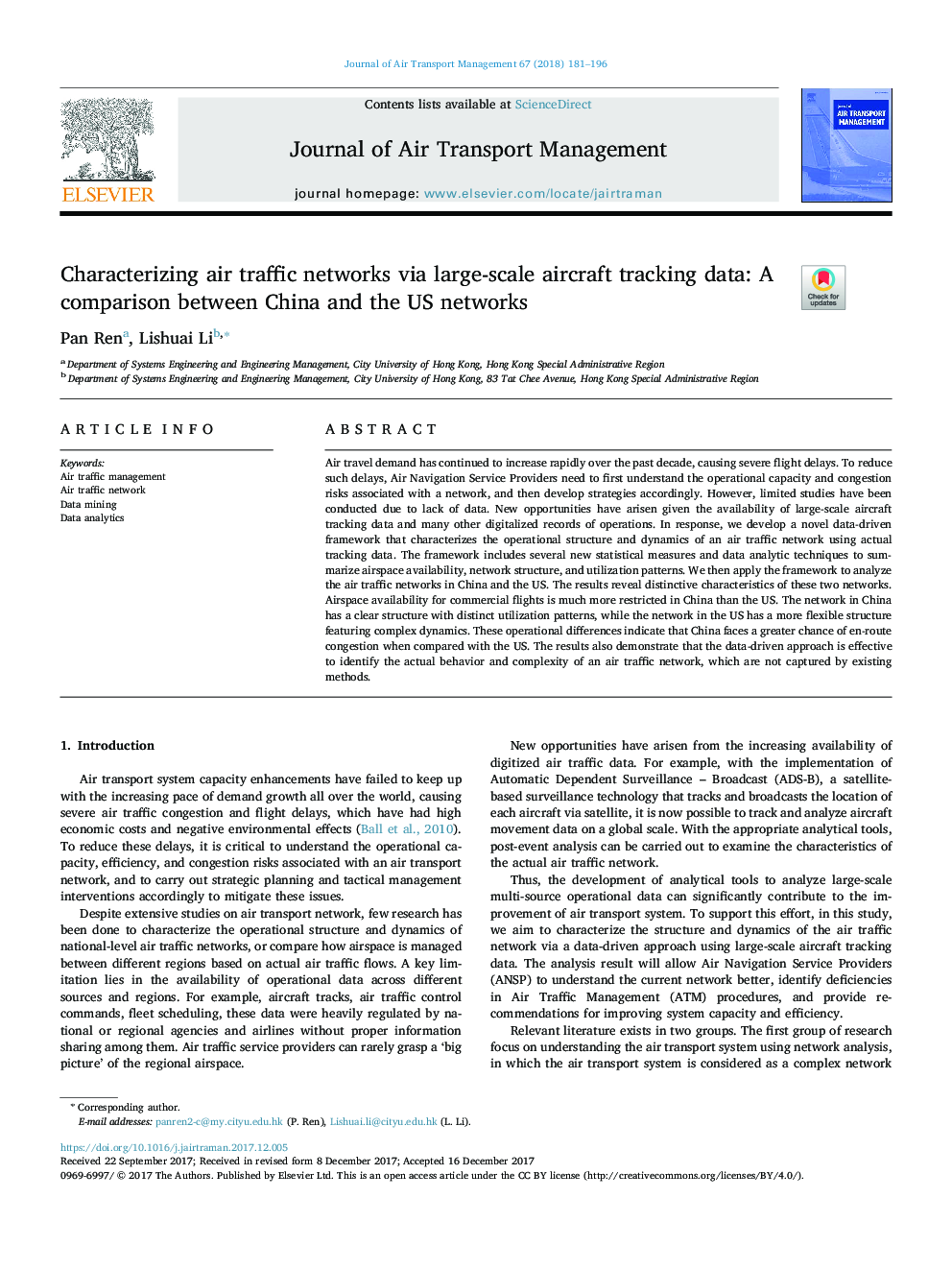| Article ID | Journal | Published Year | Pages | File Type |
|---|---|---|---|---|
| 7435327 | Journal of Air Transport Management | 2018 | 16 Pages |
Abstract
Air travel demand has continued to increase rapidly over the past decade, causing severe flight delays. To reduce such delays, Air Navigation Service Providers need to first understand the operational capacity and congestion risks associated with a network, and then develop strategies accordingly. However, limited studies have been conducted due to lack of data. New opportunities have arisen given the availability of large-scale aircraft tracking data and many other digitalized records of operations. In response, we develop a novel data-driven framework that characterizes the operational structure and dynamics of an air traffic network using actual tracking data. The framework includes several new statistical measures and data analytic techniques to summarize airspace availability, network structure, and utilization patterns. We then apply the framework to analyze the air traffic networks in China and the US. The results reveal distinctive characteristics of these two networks. Airspace availability for commercial flights is much more restricted in China than the US. The network in China has a clear structure with distinct utilization patterns, while the network in the US has a more flexible structure featuring complex dynamics. These operational differences indicate that China faces a greater chance of en-route congestion when compared with the US. The results also demonstrate that the data-driven approach is effective to identify the actual behavior and complexity of an air traffic network, which are not captured by existing methods.
Related Topics
Social Sciences and Humanities
Business, Management and Accounting
Strategy and Management
Authors
Pan Ren, Lishuai Li,
